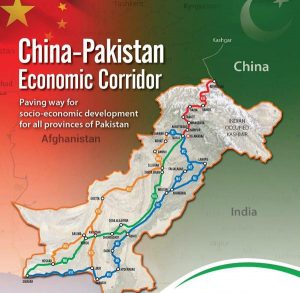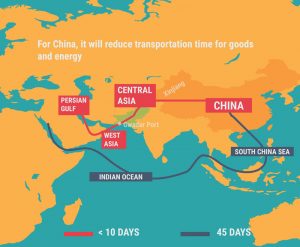Over the last few months, the nation is in a fervor over the repeated unprovoked assaults by Pakistan under the guise of terrorism. That, they have been soundly trashed in three wars is a given. Then why is Pakistan continuing in a war which it cannot win?
The constant refrain from Pakistan supporting an indigenous uprising in Kashmir seems ridiculous for all Indians, as well as the whole world, when the facts of terrorism are obvious. But, Pakistan still insists on shouting from the rooftops about the 1947 resolution in the UN on holding a plebiscite in Kashmir, cleverly focusing on the valley, rather than on the whole of Jammu and Kashmir including the portions under the occupation of the Pakistanis.
It makes sense to go back in history for a background check of the whole imbroglio.
The Gilghit agency was leased by the British from the Maharaja of Kashmir due to its strategic location and importance. In 1947 the British terminated the lease and returned it to the Maharaja who appointed his governor. But a few Pakistan backed scouts, in a bloodless coup, overthrew the existing governor, who allowed a provisional new governor to be installed. He favoured Pakistan and promptly raised the Pakistan flag. Pakistan allegedly granted self-rule to this area by creating a legislative assembly and a council. Today any design by Pakistan to integrate Gilghit-Baltistan with Pakistan is strenuously opposed by the locals who claim allegiance to Jammu and Kashmir.
It is interesting that, many people who claim the whole of Jammu and Kashmir belongs to India, have some basis. But as happens often, certain facts seem to get blurred over time.
The origin of the Chinese problem is more complicated. In 1865 a surveyor Johnson proposed the Johnson Line which Included Aksai Chin region as part of Jammu and Kashmir. China was not officially in full control of that region and hence the Johnson Line was ignored. The Maharaja accepted it and incorporated those areas into Jammu and Kashmir Further the Johnson Line was criticized for gross inaccuracies and was discarded. In 1893, Chinese officials in Kashgar and the British consented to a new boundary called the McCartney McDonald line, placing Aksai Chin in Chinese territory. The British agreed as they felt that the Karakoram Range on this side of the line formed a natural boundary to contain the Russians. The India-China war in 1962 was fought partly because of this. The Karakoram highway was started in 1959 and opened in 1979.It is a fact that India did not strenuously object to the Chines building the highway. The lack of objections from India must have been noted by the Chinese. This area also borders the Pakistan-administered Gilghit-Baltistan area. Since 1963 which saw the transfer of the Shaksgam Valley to China, Beijing has been an important player in the region. The Karakoram range was a bit of grey area and keeping India‘s attitude in mind, the Chinese took the risk of building across the land which might have been contentious, had India maintained pressure continuously. 
The Chinese signed the China-Pak Economic Corridor in November 2014 and by current estimates, the project cost is in the region of US $ 51 Billion. It encompasses a land route from the Karakoram pass through Gilghit –Baltistan ending up at the deep-water port of Gwadar in Baluchistan province, literally passing through Pakistan from its North-East corner right up to its South West port. The building of roads, bridges, piping, and other infrastructure projects like power would contribute to a major part of Pakistan’s growing economy and would be extremely vital in Pakistan’s interest. There are fantastic benefits to the Chinese, as the Gwadar port is only 400 Kms from Muscat and 500 Kms. from the straits of Hormuz through which all Gulf oil passes. It saves them more than 2000 miles of otherwise travel, through the straits of Malacca.
 Pakistan being isolated from a large portion of the world because of its sponsoring terror, desperately needs a lifeline like CPEC to shore up its economy. It has rode roughshod over the people of Gilghit-Baltistan in building these infrastructure projects without including those states in any benefits. At the same time, it is also facing opposition from freedom –fighters in Baluchistan who want an autonomous country. Facing opposition from all sides due to poor planning, they are doing what they do best-create more chaos. By diverting attention to the LOC with India and by trying to internationalize the issue, they hoped to achieve some relevancy but, now the whole world is tired of their cliched dialogue and refusal to see the writing on the wall. That, USA tolerated them so far was, purely to eliminate Osama-Bi-Laden and when that work was over, they are not so important except perhaps in the context of the China factor.
Pakistan being isolated from a large portion of the world because of its sponsoring terror, desperately needs a lifeline like CPEC to shore up its economy. It has rode roughshod over the people of Gilghit-Baltistan in building these infrastructure projects without including those states in any benefits. At the same time, it is also facing opposition from freedom –fighters in Baluchistan who want an autonomous country. Facing opposition from all sides due to poor planning, they are doing what they do best-create more chaos. By diverting attention to the LOC with India and by trying to internationalize the issue, they hoped to achieve some relevancy but, now the whole world is tired of their cliched dialogue and refusal to see the writing on the wall. That, USA tolerated them so far was, purely to eliminate Osama-Bi-Laden and when that work was over, they are not so important except perhaps in the context of the China factor.
China is in a different league altogether. Though some like to think that India is encircled through “ the string of pearls theory “ , at best it is an attempt by China to be a major player in the region and India need not feel threatened. India and China are two of the fastest growing economies and by concentrating on trade; they could bypass any residual antagonism and be good trade partners.
India needs to bring all pressures on Pakistan whether through diplomatic pressure, Indus waters and proscribing JEM and all other organizations sponsoring terror under the guise of religious/charitable organizations. It remains to be seen whether China is surreptitiously helping Pakistan against India, or is it merely Pakistan using developing funds for terror purposes. By keeping tensions on the boil between Indian and Pakistan , China maintains an upper hand in relation to both countries. There is certainly a lot at stake and India would do well to keep its hold and influence. As of now India is already making the right moves –Keeping Pakistan in its place, maintaining friendly relations with Nepal, Tibet, Bhutan, Burma, Srilanka and Seychelles beside Iran and Afghanistan.

